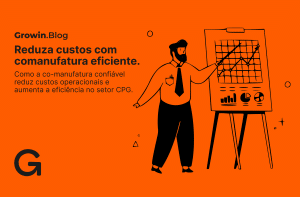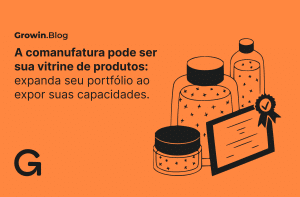In highly competitive scenarios like the CPG market, the success of new products centers not only on innovative research and development (R&D) but also on a deep understanding of consumer needs and market trends. Integrating marketing insights early in the product development phase can bridge the gap between R&D and marketing, resulting in products that meet customer expectations and drive business growth. This approach, sometimes referred to as “co-manufacturing,” can significantly enhance product outcomes and ensure a more streamlined path from concept to market.
The Importance of Early Marketing Insights
Traditionally, R&D and marketing have operated in silos, with R&D focused on creating new technologies and products, while marketing works on promoting these products to consumers. However, this separation can lead to a disconnect where products, despite being technically good, fail to resonate with the target market. To stay ahead of the competition, incorporating marketing insights early in the R&D process, can definitively better align their product development with consumer preferences, market needs, and competitive landscapes.
Benefits of Integrating R&D and Marketing
1. Enhanced Market Fit: Marketing teams possess valuable insights into consumer behavior, preferences, and trends. When these insights are integrated into the R&D phase, products are more likely to meet market demands and achieve higher acceptance rates upon launch.
2. Reduced Time to Market: Co-manufacturing—where marketing and R&D collaborate from the outset—can streamline the development process. By addressing potential market challenges and consumer needs early on, companies can avoid costly redesigns and expedite the product launch.
3. Improved Innovation: Marketing teams can provide R&D with feedback on emerging market trends and unmet consumer needs, fostering innovation that is both technologically advanced and highly relevant to the market.
4. Cost Efficiency: Aligning R&D with marketing can reduce the likelihood of product failures, thus saving on costs associated with rework, recalls, and extensive marketing campaigns to drive consumer acceptance post-launch.
Case Study: Coca-Cola Life
In the early 2010s, there was a significant shift in consumer preferences towards healthier, lower-calorie beverages. Consumers were becoming increasingly health-conscious, seeking products with natural ingredients and fewer artificial additives. Recognizing this trend, Coca-Cola saw an opportunity to develop a new product that would cater to this growing market segment. Coca-Cola’s marketing team conducted extensive market research to understand the specific preferences and concerns of health-conscious consumers and found some key insights:
- Desire for Natural Ingredients: Consumers were looking for beverages sweetened with natural, non-artificial ingredients.
- Lower Calorie Count: There was a strong preference for lower-calorie options without compromising on taste.
- Sustainability: A growing segment of consumers valued sustainability and environmentally friendly practices.
R&D Collaboration
Empowered by these insights, Coca-Cola’s R&D team began working on a new product to address these consumer demands. The collaboration between R&D and marketing was crucial in shaping the development process.
Firstly, the R&D team focused on developing a formula that used stevia, a natural sweetener derived from the stevia plant, to reduce the calorie content while maintaining the familiar taste of Coca-Cola. This addressed the consumer demand for natural ingredients and lower calories. After multiple rounds of taste testing were conducted with target consumer groups to ensure the product met taste expectations, the feedback from these sessions was used to refine the formula. Then, to cover consumers demand for sustainability, Coca-Cola Life was packaged using PlantBottle technology, which uses renewable plant materials. This innovation was highlighted in marketing campaigns to appeal to environmentally conscious consumers.
Product Launch and Marketing Strategy
The alignment of R&D and marketing did not end with product development. The marketing team crafted a strategy that emphasized the key attributes of Coca-Cola Life, leveraging the insights gathered:
- Health and Wellness Messaging: Advertising campaigns focused on the natural ingredients and lower calorie count, positioning Coca-Cola Life as a healthier alternative to traditional sodas.
- Sustainability: The use of PlantBottle packaging was prominently featured in marketing materials, appealing to eco-conscious consumers.
- In-Store Promotions: Sampling programs and in-store promotions were used to introduce consumers to the new product, ensuring they could experience the taste firsthand.
Results
The launch of Coca-Cola Life was very positive in various markets around the world. The product successfully tapped into the health-conscious consumer segment, resulting in strong initial sales. This is a very good example of how the synergy between R&D and marketing can lead to the successful development and launch of a new product in the CPG industry.
Effective Integration
Being on the same page is not enough. Some strategies are important to help companies to successfully align R&D with marketing to better product development and launch:
1. Cross-Functional Teams: Establishing cross-functional teams that include members from both R&D and marketing can facilitate better communication and collaboration. Regular meetings and joint workshops can help synchronize efforts and align goals.
2. Shared Metrics and KPIs: Defining shared metrics and KPIs can ensure that both R&D and marketing teams are working towards common objectives. This alignment helps in tracking progress and measuring success effectively.
3. Customer-Centric Approach: Adopting a customer-centric approach in product development ensures that the end-user remains the focal point. Incorporating customer feedback through surveys, focus groups, and beta testing can provide valuable insights that shape the final product.
4. Integrated Technology Platforms: Utilizing integrated technology platforms that enable real-time data. Sharing and collaboration between R&D and marketing can streamline processes and enhance decision-making.
Fostering Collaboration
In times where consumer preferences evolve so fast, the need for a synergistic relationship between R&D and marketing has never been more critical. By embracing a co-manufacturing approach and integrating marketing insights early in the product development phase, companies can bridge the gap between innovation and market readiness. This alignment not only results in better product outcomes but also drives business growth, customer satisfaction, and competitive advantage.
Moreover, fostering collaboration between R&D and marketing is the best way companies can ensure that their products are not only technologically superior but also perfectly attuned to the needs and desires of their customers.




